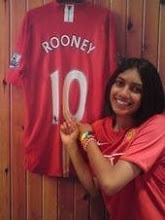ROLAND BARTHES
Barthes created narrative codes because he felt they helped to define and analyse the meanings behind different stories. One way in which he tested this was to look at a story from one point of view to gain one persepective of it and then to look at the same story form another point of view to gain a different perspective on the story.
These codes where then put into different groups:
1. Points of cultural reference
2. Symbols and Signs
3. Action and Enigma Codes - uses unanswered questions e.g who are they? what are they doing? why are they doing it? and then "what happens next" in the film
4. Simple description/reproduction
VLADIMIR PROPP
Vladimir Propp was a Russian formalist scholar who analysed the basic plot components of Russian folk tales to identify their simplest irreducible narrative elements.
Propp analysed hundreds of tales, after which he concluded that there were 31 functions of the character and 8 character types. The 8 character types were:
1. Villains - Struggles against the hero
2. Hero/Heroin - Defeats the villain. Solves the crime.
3. Donor - Prepares the hero
4. Helper - the heroes accomplice
5. Princess - the heroes reward. Character who is usually sought for during the narrative
6. Father - Gives the task to the hero
7. Dispatcher - make the lack known and sends the hero off
8. Flase Hero - takes credit for the heroes actions or tries to get the rewars (marry the princess)
CLAUDE LEVI-STRAUSS
Levi Strauss saw narrative structure in the terms of binary opposites. Levi strauss had the important insight that the way we understand ceratin words depends not so much on any meaning they themseves directly contain, but much more by our understanding of the difference of the words and its opposite or "Binary Opposite". Examples of binary opposites:
1. Good and Evil
2. Light and Dark
3. Love and Hate
4. Known and Unknown
Wednesday, 14 October 2009
Various Narrative Theories In Film
Posted by Disha at 10:51
Subscribe to:
Post Comments (Atom)

0 comments:
Post a Comment